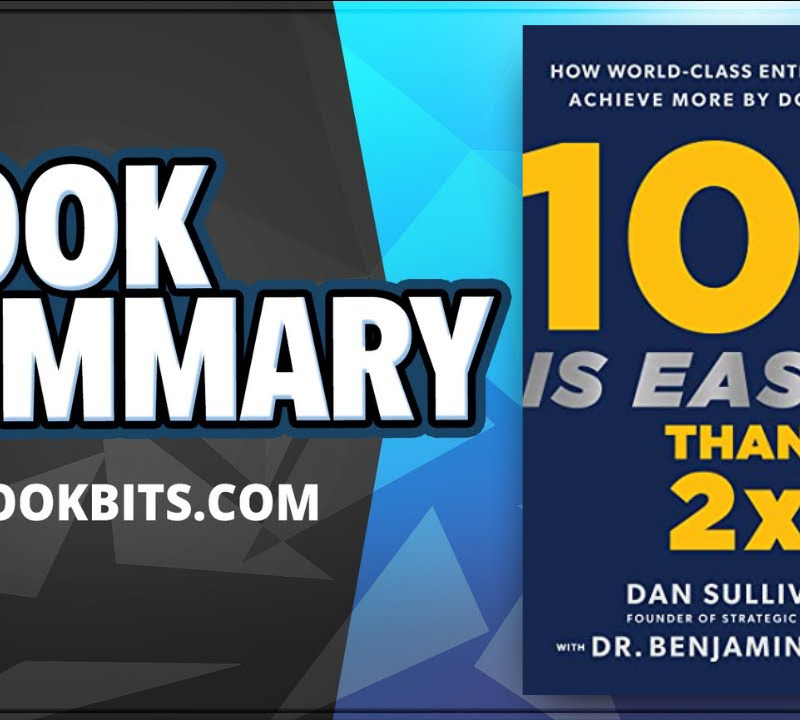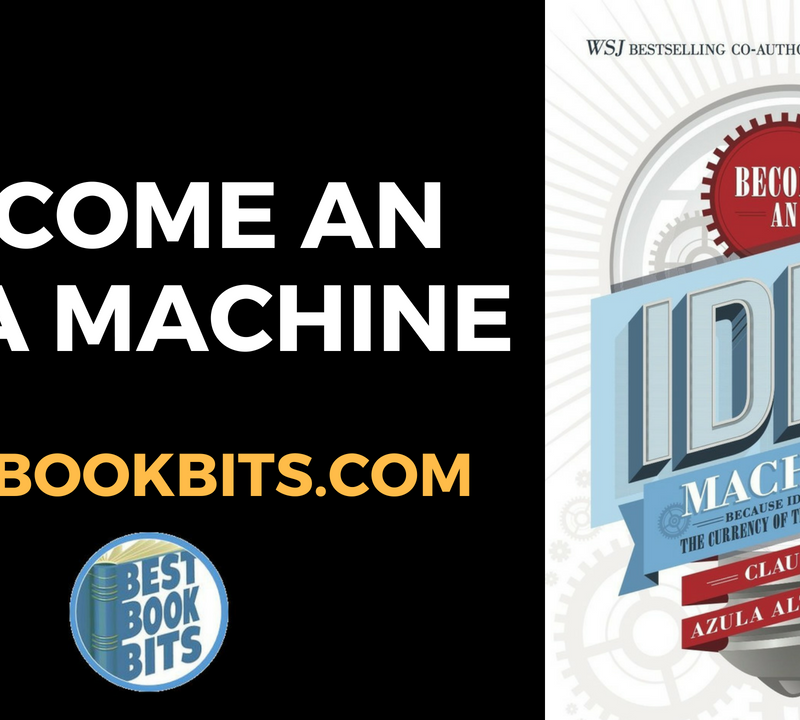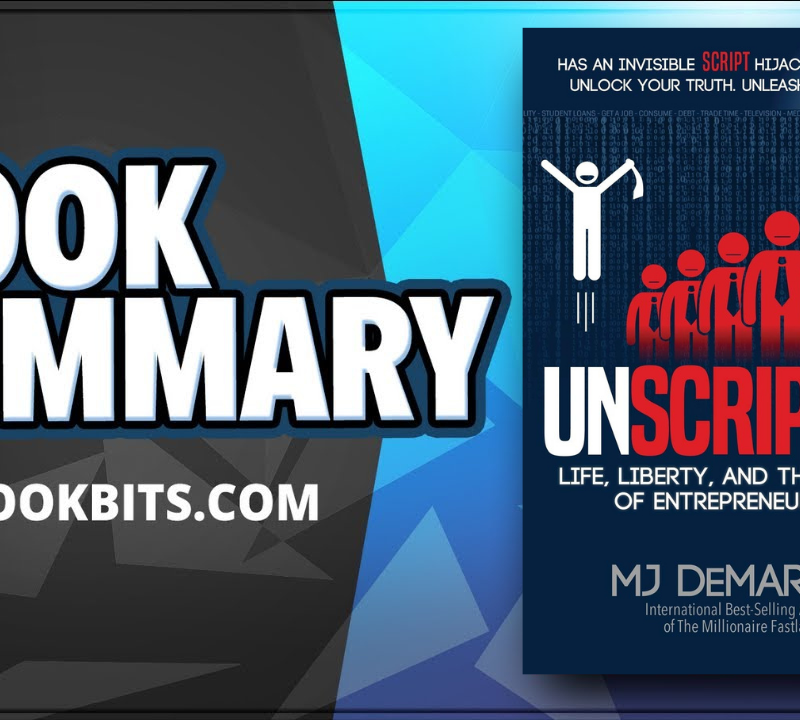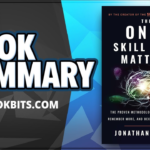★DOWNLOAD THIS FREE PDF SUMMARY HERE https://go.bestbookbits.com/freepdf
? MY FREE BOOK TO LIVING YOUR DREAM LIFE” https://go.bestbookbits.com/first-seven-steps
? SPONSOR BESTBOOKBITS BY USING PATREON https://www.patreon.com/bestbookbits
? SUPPORT BESTBOOKBITS BY CLICKING THE LINKS BELOW
-
- 150 PDF Summaries: https://go.bestbookbits.com/150
- Coaching Program: https://go.bestbookbits.com/coaching
- Subscribe to My Channel: https://www.youtube.com/bestbookbits?sub_confirmation=1
- Website: https://bestbookbits.com
- Instagram: https://www.instagram.com/bestbookbits
- Spotify: https://open.spotify.com/show/0q8OW3dNrLISzyRSEovTBy
- Facebook: https://www.facebook.com/michaelbestbookbits
- Book Club: https://bestbookbits.com/bookclub/
- Mailing List: https://mailchi.mp/d1dfc1907cdb/bestbookbits
The Six Principles of Simple Productivity
- Set limitations
- Choose the essential
- Simplify
- Focus
- Create habits
- Start small
Chapter One: Why Less Is Powerful
- Doing more things means you’re likely to do a lot of unimportant things, and you’ll be overworked and stressed at the same time.
Chapter Three: Choosing the Essential, and Simplifying
Choosing the Essential: A Series of Questions
- What are your values?
- What are your goals? What do you want to achieve in life? How about over the next year? How about this month? And today?
- What do you love? Think about what you love, who you love to spend time with, what you love doing.
- What is important to you?
- What has the biggest impact?
- What has the most long-term impact?
- Needs vs. wants.
- Eliminate the nonessential.
- Continual editing process.
Chapter Four: Simple Focus
Focusing on One Task (Single-tasking)
- Multitasking is less efficient, due to the need to switch gears for each new task and then switch back again.
- Multitasking is more complicated, and thus leaves you more prone to stress and errors.
- Multitasking can be crazy-making, and in this already chaotic world, we need to rein in the terror and find a little oasis of sanity and calm.
Here’s how to single-task instead:
- First thing in the morning, work on your Most Important Task. Don’t do anything else until this is done. Give yourself a short break, then start on your next Most Important Task.
- When you are working on a task in a time block, turn off all other distractions.
- If you feel the urge to check your e-mail or switch to another task, stop yourself. Breathe deeply. Refocus yourself. Get back to the task at hand.
- If other things come in while you’re working, put them in your in-box, or take note of them in a small notebook or on a text file on your computer. Get back to the task at hand.
- Every now and then, when you’ve completed the task at hand, process your notes and in-box, adding the tasks to your to-do lists and refiguring your schedule if necessary. Process your e-mail and other in-boxes at regular and predetermined intervals.
- There are times when an interruption is so urgent that you cannot put it off make a note of where you are
- Take deep breaths, stretch, and take breaks now and then. Enjoy life. Go outside, and appreciate nature. Keep yourself sane.
Chapter Seven: Simple Goals and Projects
The One Goal System
- Choose a goal. Make a list of things you’d like to accomplish over the next few years.
- Break it down to a sub-goal. Focus on a smaller sub-goal that you can accomplish in the next month or two.
- Weekly goal.
- Daily action.
The Simple Projects List
- List all the projects you have going on in your life, including all your work projects, any personal and home projects, projects with civic organizations, and so on.
- Choose just the top three projects on your list. Don’t choose three from each area of your life—just choose three altogether.
- You don’t move a project from the On Deck List to the Simple Projects List until you finish all three projects on your Simple Projects List. Not just one, but all three.
- Almost every project is held up as you wait for information, for other people to get back to you, for others to complete tasks, for vendors or clients to do something.
- So we multitask, but not on the task level—we multitask only on the project level.
- Break long-term projects into smaller projects that can be completed in a month or less.
Chapter Ten: Simple E-mail
Limit Your Time in E-mail
- Number of times per day.
- The best times.
- I’ve found that if you check twice a day—10 a.m. and 4 p.m. are good times
- Not first thing in the morning.
- Turn off e-mail notifications.
Reduce Your Incoming Stream
-
- I recommend using Gmail, as it has the best spam filter possible. I get zero spam in my in-box.
-
- I often get notifications from the many online services I use, from Amazon to WordPress to PayPal and many more. As soon as I notice those types of notifications filling up my in-box, I create a filter (or “rule” if you use Mail.app or Outlook) that will automatically put these into a folder and mark them as read, or trash them, as appropriate.
- Batch work.
- Stupid joke e-mails.
- If you have friends and family who send you chain e-mails and joke e-mails and the like, e-mail them and let them know that you are trying to lessen the huge amount of e-mail you have to deal with, and while you appreciate them thinking of you, you’d rather not receive those kinds of messages.
- Set expectations and publish policies.
- Creating a Frequently Asked Questions page for more common questions and issues.
Process to Empty
- Temporary folder.
- If you have a very full in-box (hundreds or thousands of messages), you should create a temporary folder (“to be filed”) and get to them later, processing them perhaps thirty minutes at a time until they’ve all been taken care of.
- Have an external to-do system.
- Process quickly.
- Open each e-mail and dispose of it immediately. Your choices: delete, archive (for later reference), reply quickly (and archive or delete the message), put on your to-do list (and archive or delete), do the task immediately (if it requires two minutes or less—then archive
- Be liberal with the delete key.
- Too often we feel like we need to reply to every e-mail. But we don’t. Ask yourself, “What’s the worst that will happen if I delete this?” If the answer isn’t too bad, just delete it and move on.
- Process to done.
- When you open your in-box, process it until you’re done. Don’t just look at an e-mail and leave it sitting in your in-box.
When you get an urge to go on the Internet, let it pass. Every urge is like a wave—it builds up, then it goes away. Another wave will come, but just ride that one out too. Every urge will pass if you just wait a few minutes.
Chapter Thirteen: Simple Commitments
Take Inventory of Your Commitments
- Work
- Side work
- Family
- Kids
- Civic (We may volunteer for different organizations, or be a board member or officer)
- Religious
- Hobbies
- Home
- Online (We may be a regular on a forum or mailing list or Google group)
Then make a “Short List” of your four to five most important commitments.
Begin Eliminating the Nonessential
- Start with something small.
- Call or e-mail to send your regrets.
- Eliminate the commitment from your appointment, and instead fill that time with something from your Short List. Don’t just use that time to watch TV
- Repeat this process with the other nonessential commitments, one at a time, until you’re done. Strive to eliminate all nonessential commitments from your list.
Each time you cut a commitment, it may give you a feeling of guilt, because others want you to keep that commitment.
But it’s also a huge relief, not having to keep that commitment each day or week or month.
It frees up a lot of your time, and while others may be disappointed, you have to keep what’s important to you in mind, not what’s important to everyone else.
If we committed to what everyone else wanted all the time, we would never have any time left for ourselves.
Learn to Say “No”
Your list of commitments didn’t become overloaded by itself. Those commitments were added to your life, one by one, because you accepted them. Someone made a request and you said “yes,” one commitment at a time.
If you have difficulty saying “no” to requests, here are some tips:
- First, be aware.Learn to recognize requests for what they are demands on your time.
- Consider your Short List.Is the request in line with the four to five priorities you wrote out in your Short List?
- Be honest.Tell the person that you’re trying to cut back on your commitments because you’ve been overloaded.
- Be firm.Say, “I just can’t right now” and make it clear that you’re not open to negotiation or persuasion.
- I wish I could.Often I will honestly tell the person, “I really wish I could. It sounds great. But I just don’t have the time right now.”
- Don’t be sorry. Nothing in this world has failed because one person said “no” to a request—if the need was great enough, another person filled it.
Chapter Sixteen: Slow Down
Slow Attention
- The projects we focus on are the projects that get completed.
- with the hectic pace of our lives, our attention is pulled in a million different directions all the time.
Slow Working
- If you can focus on the important tasks and projects, and keep your focus on those tasks, you will accomplish important things.
- In contrast, someone can work frantically for twelve hours a day, doing as many tasks as possible, and yet not accomplish anything important.
Slow Eating
Take smaller bites, you chew each bite slower and longer, and you enjoy your meal longer.
Good reasons you should consider the simple act:
- Lose weight.
- Enjoy your food.
- Better digestion.
- Less stress.
- Rebel against fast food and fast life.
Slow Driving
Driving is a much more calm, serene experience, and I enjoy it much more. Driving for me has become a time of contemplation.
Here are just five reasons to drive slower:
- Save gas.
- Save lives.
- Save time? Start out a few minutes early and you’ll arrive at the same time as someone who drove faster but started later—and you’ll arrive much happier than that person, to boot.
- Save your sanity. Huge drop in my stress level
- Simplify your life. Reduce many other complications—the headache of accidents and speeding tickets, for one; going to the gas station too often, for another. It can also improve the hectic pace of life.
Here are some of the slow-driving tips that have worked for me:
- Play relaxing music.
- Ignore other drivers.
- Leave early.
- Brainstrom
- Keep to the right
- Enjoy the drive.
★DOWNLOAD THIS FREE PDF SUMMARY HERE https://go.bestbookbits.com/freepdf
? MY FREE BOOK TO LIVING YOUR DREAM LIFE” https://go.bestbookbits.com/first-seven-steps
? SPONSOR BESTBOOKBITS BY USING PATREON https://www.patreon.com/bestbookbits
? SUPPORT BESTBOOKBITS BY CLICKING THE LINKS BELOW
-
- 150 PDF Summaries: https://go.bestbookbits.com/150
- Coaching Program: https://go.bestbookbits.com/coaching
- Subscribe to My Channel: https://www.youtube.com/bestbookbits?sub_confirmation=1
- Website: https://bestbookbits.com
- Instagram: https://www.instagram.com/bestbookbits
- Spotify: https://open.spotify.com/show/0q8OW3dNrLISzyRSEovTBy
- Facebook: https://www.facebook.com/michaelbestbookbits
- Book Club: https://bestbookbits.com/bookclub/
- Mailing List: https://mailchi.mp/d1dfc1907cdb/bestbookbits













